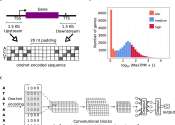Microbes far beneath the seafloor rely on recycling to survive
Scientists from Woods Hole Oceanographic Institution reveal how microorganisms could survive in rocks nestled thousands of feet beneath the ocean floor in the lower oceanic crust, in a study published on March 11 in Nature. ...








